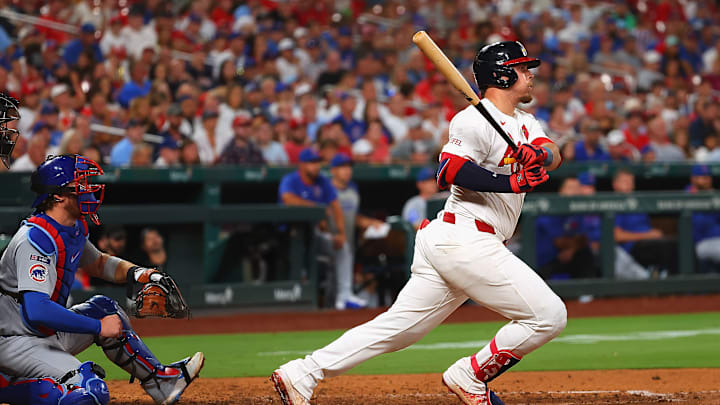Nolan Gorman has been a steadily above-average hitter since debuting in the big leagues in 2022, though the Cardinals' infielder has hardly lived up to the lofty expectations that surrounded him as a top prospect.
Through the middle of August this season, Gorman has played in 76 games while producing career-worst power numbers—his 10 home runs and .181 ISO are the lowest figures of his career, and his .405 slugging percentage is barely ahead of the .400 mark he supplied to the lineup in 2024.
However, despite a meager batting line of .225/.314/.405 that is being dragged down by a truly horrendous start to the season, Gorman has made some changes since the All-Star break that should bring renewed hope to Cardinals fans.
Patient, selective approach guiding Nolan Gorman's second half steadiness
Stipulating small sample caveats up top, here's Gorman's performance in the second half of 2025 thus far: .258/.343/.387, 110 wRC+, 28.6% strikeout rate, 11.4% walk rate.
That's a nine-point jump in his wRC+ from the first half, and a near-ten-percent drop in his strikeout rate from July. We know that Gorman spent the beginning part of the year sacrificing some power for contact after offseason swing changes, which was something he started to undo in June when he hit six home runs and slugged .526.
Nolan Gorman since 6/7 (138 PA):
— Adam Akbani (@AdamAkbani) August 11, 2025
127 wRC+
.220 ISO
46.2 HardHit%
50.6 SweetSpot%
He's been great offensively and deserves every chance to play regularly down the stretch pic.twitter.com/7kS6ksqeZn
What's interesting is that Gorman's batted ball data hasn't changed much, if at all. He's actually hit more ground balls since the All-Star break, and his hard and soft-hit rates have remained generally consistent.
So, what's going on here? Well, the answer may actually lie in those aforementioned swing changes finally taking effect, brought on by a conscious change in his plate approach.
Gorman's swing percentage on the year is now down 4.2% from 2024, sitting at a comfortable 46.8% (by far a career low). The good news is that's mostly driven by a huge decrease in his out-of-zone swing rate (down 3.6% year over year), as his in-zone swing rate has remained identical to last season (51.1%).
That's started to lead to all kinds of good outcomes, namely a 3.4% hike in his walk rate and a career-best whiff rate of 32.2%. That his average exit velocity is up from 2024 despite a 0.8 mph drop in his bat speed is also rather promising, considering the latter metric used to be one of his calling cards.
Now, Gorman has his flaws — his recurring back troubles spell doom for the future, and his defense, on its best day, is passable — but the second and third baseman isn't a lost cause just yet. He deserves a chance to play regularly down the stretch, with a chance to prove that a more patient, less powerful Nolan Gorman is still an eminently valuable player.
